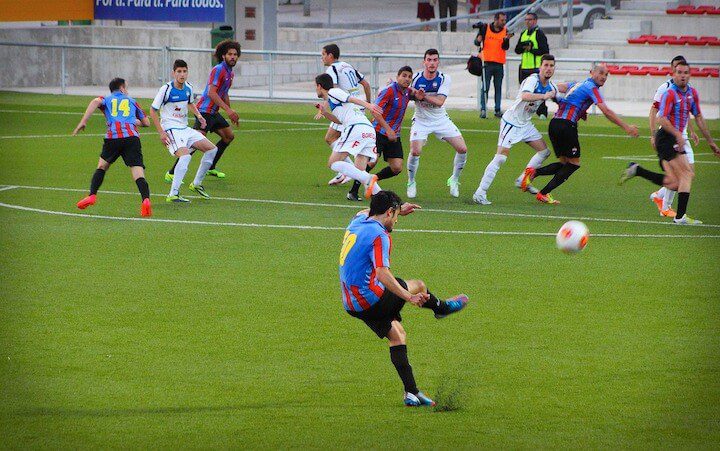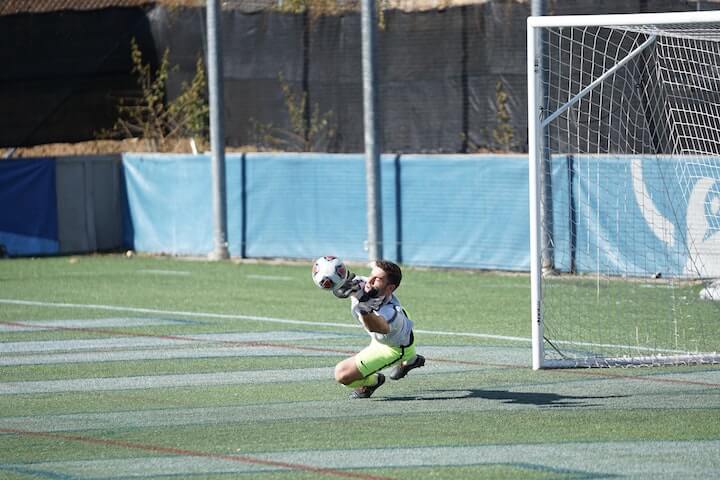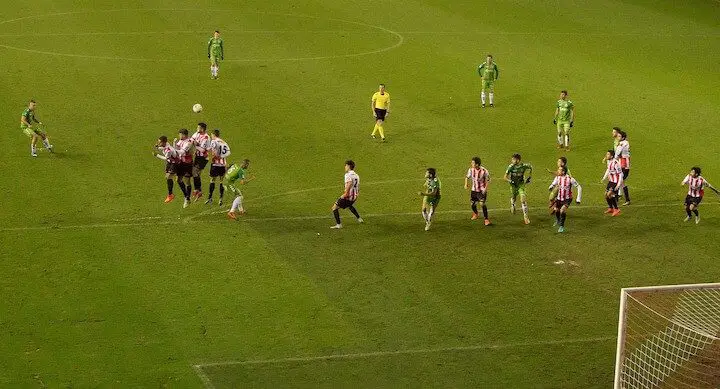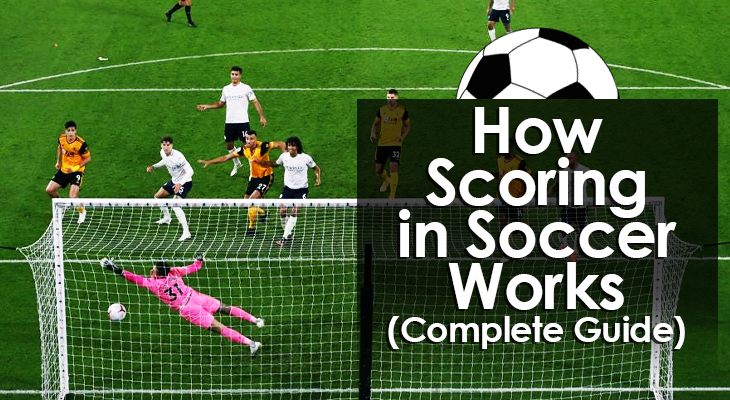How Scoring in Soccer Works (Complete Guide)
Most people have a general idea of how soccer works.
11 players on each team run around the field and try to outscore each other.
But if you're a beginner, scoring in soccer (the scoring system) may be confusing.
Unlike most sports, soccer games can end in ties, with both teams sharing the spoils.
But there are tournaments where one team has to win, so tie-breakers come into effect -- making things even more confusing for newbies.
Below, I explain how scoring in soccer works and discuss the different competition formats.
How Scoring in Soccer Works:
A soccer game is a 90-minute matchup, split into two 45-minute halves.
At the end of each half, the referee adds on stoppage time to account for time lost due to breaks in the play -- like injuries or substitutions.
Players may score at any time during the regulation period.
Every goal is worth a single score for the team. 1 point.
The team with the most goals at the end of the match is the winner.
In league formats, games can end in ties. But in cup competition, an even game goes to extra time, penalties, or a rematch to determine the winner.

How to Score in Soccer
When it comes to scoring, the most important line is the end line.
To score a goal, a team get the ball past the end line and within the goal frame.
The ball doesn’t have to hit the back of the net for the goal to count.
As soon as the entire ball goes over the line, it’s a goal.
To ensure fairness and proper regulation, soccer goal dimensions must be 8 yards (7.32 m) wide and 2.67 yards (2.44 m) high.
Soccer fields are also regulated by size, but they don’t have to be the exact same length and width. As long as they fall within the guidelines, they’re suitable for play.
But more importantly for goalscoring, the lines themselves should be 5 inches thick.
Most goals come from open play, after a team works the ball forward and creates a shooting chance. However, teams can score in a variety of ways and many goals result from penalty kicks, free kicks, or set pieces.
Unfortunately, teams also score own goals every now and again. This is where a player accidentally hits the ball into their own net. And yes, these goals count just like any other.
What Happens When a Team Scores a Goal?
When a a team scores a goal, referees temporarily stop play.
The referee will blow their whistle and point to the center of the field to indicate a successful goal.
The scoring team typically celebrates together and interacts with the crowd for around a minute.
Once celebrations are over, both teams get into position inside their own half of the field ahead of the restart.
The team that conceded the goal takes tip-off, just like at the start of a game, and the play continues.
Video Assistant Referee (VAR)
In the past decade, VAR has become an important part of soccer.
Operating off the field in a technical room, the VAR officials are responsible for checking the validity of goals, among other things -- like offsides or possible red card tackles.
In major competitions, it’s now very common to see VAR checks after a scored goal.
The VAR officials must check the footage of the goal to ensure all players involved were onside and that the referee didn’t miss any clear or obvious infringement in the build-up.
If they spot something, they communicate with the referee and determine whether the goal should stand.
Although VAR often gets criticized, it has been highly effective in improving the fairness of games.
This is particularly true when it comes to straightforward calls, like offside.
Most major soccer leagues also use goal-line technology to help the referee confirm if the ball indeed crossed the line.
The digital system detects the movement of the ball in relation to the end line and sends a signal to the referee’s watch if there is a goal.
This is an extremely effective system as the speed of the game can make it difficult for referees to determine if the entire ball crosses the line or not.

Determining the Winner
The winner of a soccer game is the team with more goals at the end of regulation time.
In tied games, however, there is sometimes a different outcome.
Below we'll break down how scoring in soccer works for tied games in different formats:
a. League Format
In league competitions, every team plays each other twice.
One home game and one away game.
The winning team gets three points, with losing team getting zero points.
If the game ends in a tie, both teams get one point each.
When the season ends, the team with the most total points is crowned the champion.
So, in standard league formats, a tie is a valid end to a game.
b. Cup or Knockout
In most cup competition formats, every game is win or go home.
The victors progress to the next round, while the losers get eliminated.
If these games end in a tie, there are two common outcomes
1. A rematch is scheduled for a later date to determine the winner
2. The game goes to extra time
Extra time is like a mini soccer game played after the regulation 90 minutes are up.
It consists of two 15-minute halves played under the normal rules.
If the teams are still even after extra time, the game is decided by a penalty shootout.
Penalty Shootouts
Penalty shootouts are the ultimate tiebreakers in all of sports.
They’re full of tension, drama, and excitement if your team wins.
Contrastingly, being on the losing side of a shootout can be devastating.
Here’s a simple explanation of how a penalty shootout works:
1. A shootout is a best-of-five penalty contest.
2. Teams take turns taking one penalty at a time.
3. Each penalty must be taken by a different player.
4. Each penalty is a single kick and rebounds are not allowed.
5. If the teams are even after five penalties, it goes to sudden death.
6. If all players take a penalty and the shootout is even, the order resets and it continues.
Penalty shootouts have decided countless big games over the years, including major finals like the World Cup, European Championships, Uefa Champions League, and the MLS Cup.
Interestingly, goals scored during penalty shootouts do not add to the overall score of the game -- nor do they affect the total tally of goals scored by the scorers.
In other words, penalty shootouts are technical formalities used only to determine the outcome of a game.
Aggregate Scoring and Away Goals
Some cup competitions have two-legged matchups.
This means each round consists of a home game and an away game.
The aggregate score (total goals from both games) determines the overall winner.
So, a team can afford to lose one of the games as long as they can overcome the goal deficit in the other leg.
If the scores are level after the second leg, the game usually goes to extra time, followed by penalties if necessary.
Although it’s less common nowadays, some tournaments recognize an “Away Goals Rule.”
Under this ruleset, if a two-legged matchup ends in a tie, the team that scored more goals in their opponent’s stadium is declared the winner.

Conclusion
Scoring in soccer is as straightforward as it gets.
It’s also quite low-scoring compared to popular sports like basketball and American Football, which can put some people off.
But please, don’t be deterred.
Once you get accustomed to the rules (it won’t take long), you’ll quickly fall in love with the beautiful game.
As a general rule, leagues permit ties, and cup competitions do not.
Aside from extra time and penalties, scoring in soccer is the same for all games.

